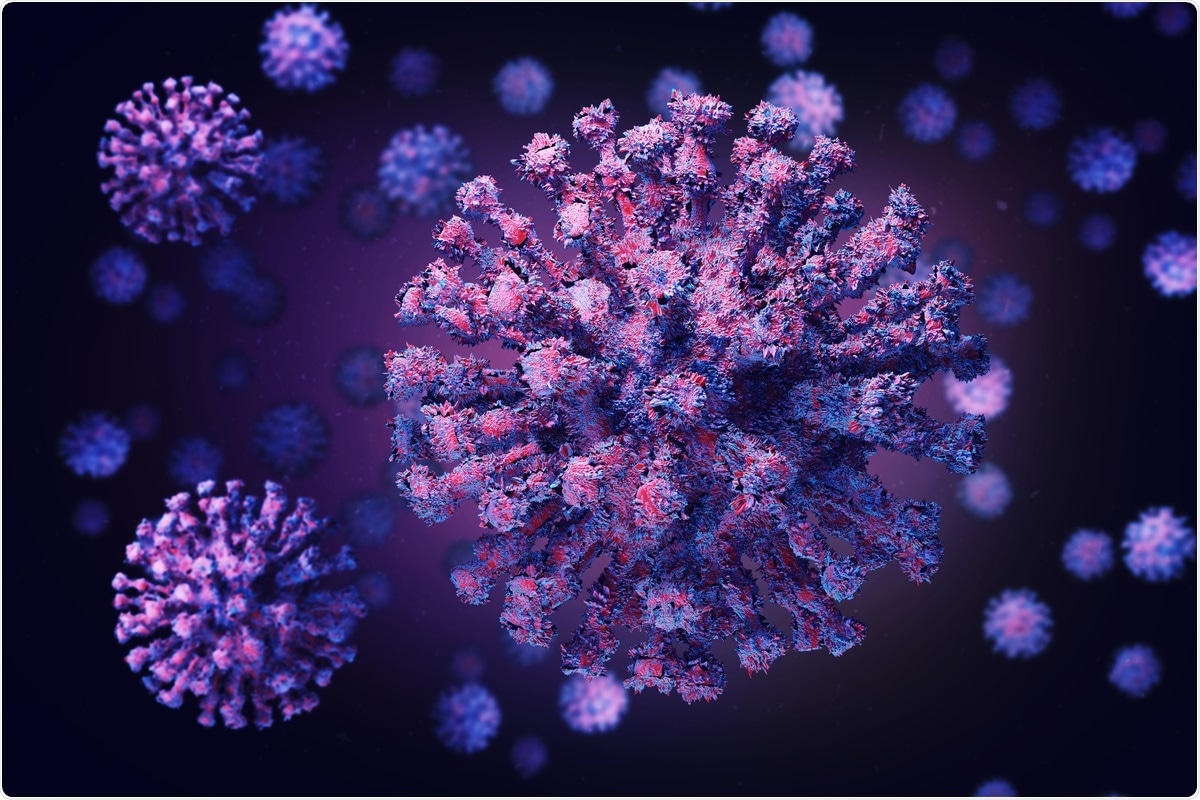Identification of novel SARS-CoV-2 alpha variant sub-lineage in Europe

Scientists from Germany have recently identified a new sub-lineage of the alpha variant of severe acute respiratory syndrome coronavirus 2 (SARS-CoV-2) in some European countries. This sub-lineage harbors additional mutations in the nucleoprotein, spike protein, and open-reading frame 8 (ORF8). The variant with spike mutations is 3-fold less sensitive to neutralization by coronavirus disease 2019 (COVID-19) vaccine-induced antibodies. The study is currently available on the medRxiv* preprint server.
 Study: Emergence and spread of a sub-lineage of SARS-CoV-2 Alpha variant B.1.1.7 in Europe, and with further evolution of spike mutation accumulations shared with the Beta and Gamma variants. Image Credit: iunewind/ Shutterstock
Study: Emergence and spread of a sub-lineage of SARS-CoV-2 Alpha variant B.1.1.7 in Europe, and with further evolution of spike mutation accumulations shared with the Beta and Gamma variants. Image Credit: iunewind/ Shutterstock
Background
The alpha variant (B.1.1.7) of SARS-CoV-2 was first detected in the UK in September 2020. With significantly higher transmissibility than previously circulating strains, the alpha variant caused a sharp rise in new COVID-19 cases in the UK between February and May 2021. The original alpha variant is characterized by 17 mutations on the spike protein, ORF lab, ORF8, and nucleoprotein.
In Germany, continuous genomic surveillance was started in January 2021 to identify newly emerging viral variants and characterize the dynamics of viral spread at the local-, national-, and global levels.
In the current study, the scientists have identified a new sub-lineage of the alpha variant through genomic epidemiology analyses that they conducted weekly using viral isolates collected from a border region between Germany, Poland, and the Czech Republic.
They have determined the evolution, transmission dynamics, and immune escape ability of this sub-lineage by conducting phylogenetic analysis, epidemiological analysis, virus neutralization assay, and viral growth kinetics.
Identification of alpha sub-lineage
The scientists sequenced 948,077 alpha variant genomes and identified a specific sub-lineage that carries two additional mutations. These mutations are G204P on nucleoprotein and K68stop on ORF8. This sub-lineage showed an unequal distribution pattern. It accounted for 60 – 95% of all alpha-related cases in the Czech Republic, Hungary, Slovakia, and Austria. In contrast, about 10 – 35% of cases in Germany, Denmark, Switzerland, Poland, and France, and less than 10% of cases in Belgium and the Netherlands were associated with this sub-lineage. In the UK, it was associated with only 0.4% of all alpha cases.
Transmission dynamics of alpha sub-lineage
The sub-lineage was identified first in November 2020 in Switzerland, Austria, France, Slovakia, and Denmark. However, it started circulating in 23 European countries by the end of January 2021. In the Czech Republic, the sub-lineage was first identified in January 2021 and soon became dominant. Between January and April 2021, the ratio of alpha sub-lineage to all alpha variants in the Czech Republic was 91 – 100%.
Signature mutations
The most common signature mutations found in the alpha sub-lineage were the same as the signature mutations found in the original alpha variant. Only two additional mutations G204P and K68stop were detected on nucleoprotein and ORF8, respectively.
Furthermore, extensive sequencing analysis identified another variant of the alpha sub-lineage carrying two additional spike mutations (D138Y and A701V). The D138Y spike mutation found in this new variant is one of the signature mutations of the SARS-CoV-2 gamma variant. Similarly, the A701V spike mutation is one signature mutation of the beta variant. This new variant of alpha sub-lineage was primarily detected in Germany and accounted for 50% of all alpha-related vaccine breakthrough cases.
Functional characterization of alpha sub-lineage
The scientists tested the susceptibility of the original alpha variant, alpha sub-lineage, and spike mutation-containing sub-lineage to neutralization by BNT162b2 COVID-19 vaccine-induced antibodies. The findings revealed that the alpha sub-lineage with two spike mutations is 3.2-fold less susceptible to antibody-mediated neutralization than the original alpha variant and alpha sub-lineage.
Regarding the replication rate in lung epithelial cells, the spike mutation-containing variant showed reduced fitness compared to the other two tested variants.
Study significance
The study identifies a novel sub-lineage of the SARS-CoV-2 alpha variant that contains two additional mutations in the nucleoprotein and ORF8. This variant has caused a surge in new COVID-19 cases in some European countries, especially the Czech Republic.
Moreover, the study identifies another variant of this alpha sub-lineage that contains two additional spike mutations. This new variant is relatively less susceptible to antibody-mediated neutralization. However, because of the reduced replication fitness, this variant is expected to have lower transmissibility.
*Important notice
medRxiv publishes preliminary scientific reports that are not peer-reviewed and, therefore, should not be regarded as conclusive, guide clinical practice/health-related behavior, or treated as established information.
- Stadtmueller M. 2021. Emergence and spread of a sub-lineage of SARS-CoV-2 Alpha variant B.1.1.7 in Europe, and with further evolution of spike mutation accumulations shared with the Beta and Gamma variants. medRxiv. doi: https://doi.org/10.1101/2021.11.01.21265749 https://www.medrxiv.org/content/10.1101/2021.11.01.21265749v1
Posted in: Medical Science News | Medical Research News | Disease/Infection News
Tags: Antibodies, Antibody, Assay, Coronavirus, Coronavirus Disease COVID-19, Epidemiology, Evolution, Genomic, Mutation, Protein, Respiratory, SARS, SARS-CoV-2, Severe Acute Respiratory, Severe Acute Respiratory Syndrome, Spike Protein, Syndrome, Vaccine, Virus

Written by
Dr. Sanchari Sinha Dutta
Dr. Sanchari Sinha Dutta is a science communicator who believes in spreading the power of science in every corner of the world. She has a Bachelor of Science (B.Sc.) degree and a Master's of Science (M.Sc.) in biology and human physiology. Following her Master's degree, Sanchari went on to study a Ph.D. in human physiology. She has authored more than 10 original research articles, all of which have been published in world renowned international journals.
Source: Read Full Article